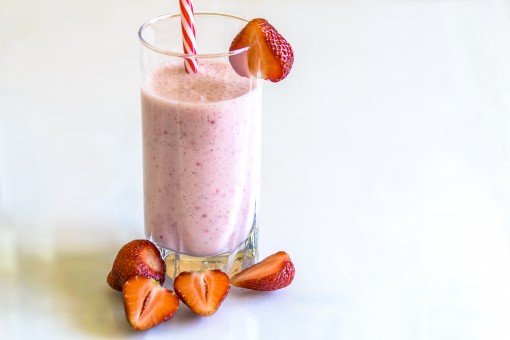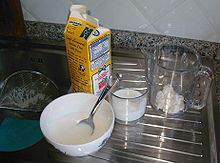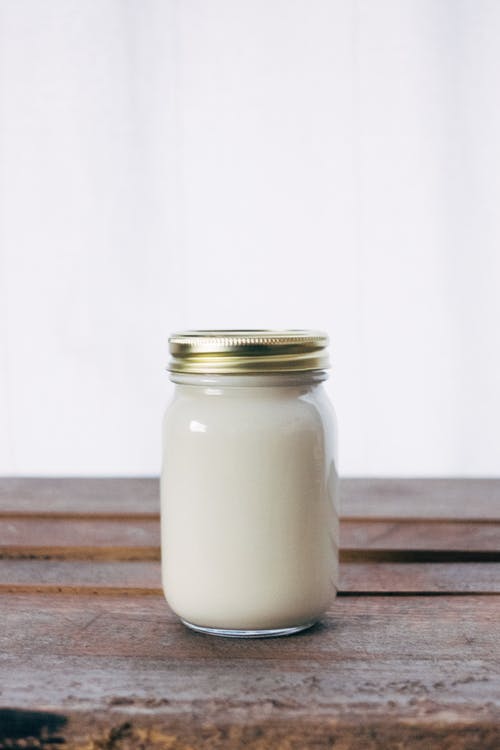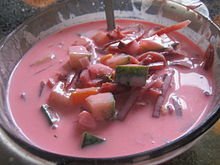With the growing awareness about important healthy foods, it’s no surprise that people are taking more interest in options like kefir. This might not yet be a staple in an American diet, but it’s worth learning about for the different taste and health benefits.
About Kefir
Kefir usually refers to a sort of fermented drink made from milk. Its consistency is like a thin kind of yogurt, concocted using kefir grains. These grains are a kind of mesophilic symbiotic culture. The main origins of this drink lie in Russia, North Caucasus, and Eastern Europe. The preparation of kefir involves inoculating milk from sheep, cows, or goats with the kefir grains.
As for the taste, kefir has a distinctively tangy flavor. It reminds one of yogurt, sometimes even being called drinkable yogurt to keep things simple. However, the process of making kefir and yogurt and completely different, as both have separate kinds of cultures.
Etymology of Kefir
The term ‘kefir’ has been used in Russia since 1884 at least, and is believed to have originated in North Caucasus. There are also some sources that link the word to köpür, which means ‘foam’ and is of Turkish origin. Other evidence points towards ‘kaf’, which is a Persian or Kurdish word with the meaning of ‘bubbles’ or ‘foam’.
Traditionally, the making of kefir was by using goatskin bags that were filled with milk and kefir grains. These bags would then be hung around a doorway, where anyone passing will knock them about. This will mix up the two main ingredients and result in milk kefir after some time.
From the former Soviet Union, the tradition of kefir spread to Japan, Europe, and even the United States soon after the beginning of the 21st century. In Latin America, this drink is also known as a ‘Bulgarian drink’ or ‘búlgaros’ in the native language.
The Working of Kefir Cultures
The milk kefir grains are instrumental in making the drink; you add them to the milk in order to get the process started. Alternatively, one could use a starter culture to get the same result. When we add the grains or the culture to the milk, the bacteria in these components start eating up the lactose or the sugar in the liquid. The lactose will give the grains nourishment, which results in their growth and reproduction.
After the culturing process is complete, the lactose in the milk has been consumed. At that point, the grains would need more food. If they stay in the liquid for much longer, they will undergo stress. This is why these grains should be strained out of the kefir after the culture process is over. They can then be reused in a fresh batch of milk.
This cycle requires staying alert and on top of things, which need some practice. Once you get the process down pat, however, you can make your own kefir indefinitely, keeping the grins strong and healthy at the same time.
The fermentation or culturing of kefir is usually done overnight. The temperature and other conditions also need to be just right. After the fermentation, the result is a carbonated, sour, and somewhat alcoholic drink.
Starter Culture Types
There are two types of starters that can be used to make kefir. As mentioned above, milk kefir grains are one of them. These are a viscous mass that contains several varieties of yeast and bacteria. While there aren’t any grains in these kefir grains, they get the name from their texture and number. They are very tiny as well as numerous, much like actual grains of sand. They look like tiny cauliflower grains and can range from yellow to white in color.
Kefir grains require some maintenance so that they remain alive and useful for making many kefir batches in the long term. This requires feeding them daily with fresh milk, or they can starve and die.
If we don’t want the hassle of feeding kefir grains every day, or if we just want to try making kefir now and then, a powdered starter culture is probably the best option. This might not sit well with many kefir purists, who argue that a powdered culture doesn’t yield an authentic result. This is because the microorganism in kefir grains haven’t all been identified yet.
With a powdered started, you get fewer bacteria and strains of yeast. This might lead to a compromise on the taste of the resulting kefir and also lessen the health benefits.
Types of Milk
The type of milk used for the making of kefir is usually not that important. We can use all kinds of animal milks, no matter what their aroma, texture, or flavor is like. Their nutritional qualities are also a separate fact and won’t have much bearing on how the kefir turns out. Traditionally, raw milk has been used in the production of kefir.
If someone prefers a non-dairy option, kefir grains are also capable of fermenting most types of milk substitutes. We can use nut milk, coconut milk, rice milk, and soy milk for making kefir. The same goes for any sort of sugary liquid such as fruit juices, ginger beer, and coconut water. It’s not essential that the bacteria consume mil sugar for making kefir. However, the liquid used should have all the required growth factors or the kefir grains may cease to grow.
In fact, we can even make kefir from sugary water. This is called water kefir or tibicos, and can have a unique microbial composition. Its appearance will also be very different from that of milk kefir.
The Pronunciation of Kefir
There might be some debate on how to pronounce kefir, with different cultures preferring different pronunciations. However, there’s no right or wrong way to go about pronouncing this word; it could depend on an individual’s preference.
We can pronounce it a ‘ke-feer’, which gives it a sort of French twist. ‘Kee’-fur’ is another form, which is usually the way it’s pronounced in the United States. ‘Keh’-fur’ is another common pronunciation, one that we can usually find in the Middle East.
Uses of Kefir
Since it has Lactobacillus bacteria inside it, kefir could be the key ingredient in making sourdough bread. It’s also a substitute of buttermilk for baking recipes. In Lithuania, kefir is used as one of the main ingredients in borscht, which is also known as cold soup. Okroshka is yet another soup that has a kefir base; this has its origin in Russia.
Other than these recipes, kefir is also a good base for smoothies, salad dressing, milkshakes, and even homemade ice cream. Since it has a low lactose content, those with lactose intolerance can also use it in place of milk on their granola or cereal.
Conclusion
Kefir is a unique and healthy drink that we can consume in place of sugary soda. When used properly, this can be part of a new lifestyle if you’re looking to lose weight or just to make healthier choices.







